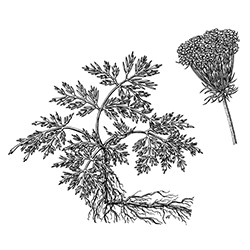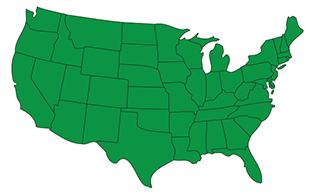

Wild Carrot
Daucus carota
Wild Carrot is a biennial broadleaf weed that is also referred to as Queen Anne’s Lace, Birds-nest and Devil's Plague. Its scientific name is Daucus carota.
Identify

Bipannate

Dissected
Wild Carrot can be identified as a broadleaf weed forming a basal rosette of leaves the first year and then a vertically flowering stalk the second. Its stems are hollow, vertically ribbed and noticeably hairy. The leaves are primarily basal with hairy edges. Wild Carrot has a stout, yellowish-white taproot and a fibrous root system. The leaves have a carrot-like odor. Blooming from May through October, Wild Carrot produces compound umbels of small white flowers. Each umbel has a whorl of linear green bracts at its base and consists of about 30 flowers, each of which consists of five white petals. Wild Carrot reproduces by seeds.
Life Cycle
This broadleaf weed commonly grows in low-maintenance turf and is often found in thickets, degraded prairies or meadows, pastures, abandoned fields, vacant lots and along fence rows, railroads and roadsides. Wild Carrot can be found in abundance throughout the United States and Canada.

Control
Daucus carota usually cannot compete in well-maintained lawns with thick, dense grass. However, once established, the weed can become invasive. Cultural weed control methods, such as good watering and mowing practices, will help with control of Wild Carrot but not eradication. Professionally selected and applied broadleaf weed killers—based on your specific climate and geography—are the most effective method for control.







